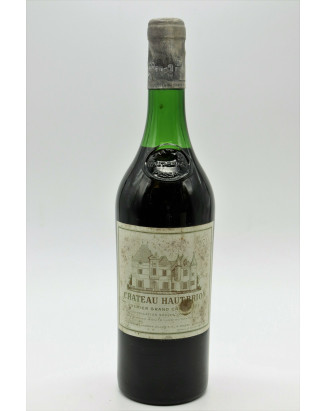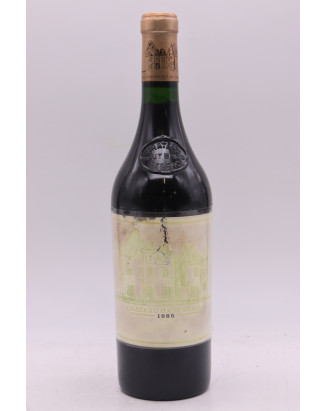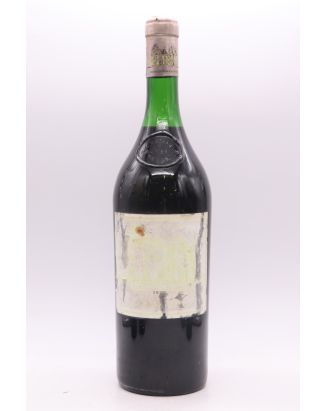




















Château Haut-Brion, a prestigious Premier Cru Classé since 1855, has a winemaking history that predates its Médoc counterparts. Recently, Prince Robert of Luxembourg, owner of this Pessac-Léognan estate, initiated a search for the earliest written mention of Château Haut-Brion. A medieval historian discovered a reference dated 21 January 1521. These documents, now preserved in the Archives départementales de la Gironde, mention the names "Aubrion" and "Haulbrion". Haut-Brion is also cited in the cellar book of King Charles II in 1660.
Following his marriage to Jeanne de Bellon in 1525, Jean de Pontac received part of the lands of the Seigneurie of Haut-Brion as a dowry and acquired the entire property in 1533. Passionate about viticulture, he began constructing the château as we know it today in 1549. His legacy continued through the family: upon his death at the age of 101, his son Arnaud II de Pontac took over the estate, passing it on to his son Geoffroy, and then to his grandson Arnaud III.
Arnaud III, an influential politician and First President of the Parliament of Guyenne, expanded the estate and doubled the vineyard area. He used his influence to promote Château Haut-Brion, particularly in England.
In the 17th century, the estate's wines were served at the table of King Charles II and quickly became favourites among London aristocrats, authors, artists, and wine enthusiasts. Arnaud III developed a new wine style, called "New French Claret" in England, which would become emblematic of the great red wines of Bordeaux.
In 1663, Samuel Pepys, a member of the English Parliament, contributed to Château Haut-Brion's fame by writing in his diary: “And there I drank a sort of French wine called Ho-Bryan that hath a good and most particular taste I never met with...”. In 1677, the English philosopher John Locke visited the estate and praised it in his writings, contributing to its legend.
In 1749, Joseph de Fumel inherited Château Haut-Brion from his father. He created a magnificent park and garden, as well as several outbuildings. On 25 May 1787, he hosted Thomas Jefferson, the United States ambassador to France and future president. A passionate viticulture enthusiast, Jefferson identified Haut-Brion as one of the four best estates in Bordeaux. After his visit, the estate's wines were served on the most prestigious tables in the United States, including the White House, under the presidencies of James Madison and James Monroe.
Château Haut-Brion changed hands several times before being acquired by Joseph Eugène Larrieu in 1836. It was promoted to Premier Cru Classé in the 1855 classification, joining Margaux, Lafite, and Latour. After the devastation of phylloxera in the 1880s, Amédée Larrieu and his son Eugène gradually replanted the vineyard on American rootstocks, modernised the cellars, and developed exports to the UK.
In 1923, Château Haut-Brion was among the few Bordeaux estates to bottle its wines at the property. André Gibert acquired the estate in 1925. In 1934, New York banker Clarence Dillon visited the château and, informed of its sale, finalised the purchase on 13 May 1935. Passionate about wine, Dillon modernised the château and production tools, redesigned the estate's park, and converted the château into a military hospital during World War II. In 1961, he introduced stainless steel vats to the winery. From 1975 to 2008, his granddaughter Joan Dillon renovated the château's interior and inaugurated a new winery in 1991.
Today, Château Haut-Brion belongs to their son, Prince Robert of Luxembourg, who has renovated the château using sustainably certified High Environmental Quality materials. He also established a renowned circular library known for its original editions and rare books. The estate is managed by Jean-Philippe Delmas, succeeding his father Jean-Bernard Delmas.
Notably, Château Haut-Brion was one of Queen Elizabeth II's favourite wines.
The Soils and Vines
Near Bordeaux, Château Haut-Brion enjoys the unique double distinction of being both a Premier Grand Cru Classé in 1855 and a Cru Classé de Graves. Its westward orientation allows excellent ripening of the grapes, ideal for Cabernet Sauvignon, which requires abundant sunlight to reach full maturity due to its thick skin.
The vineyard spans a terrace formed by two hills primarily composed of various quartz varieties, known as "graves," and sand. Historical documents and ancient maps refer to this type of soil as "Haut-Brion."
These gravelly soils rest on a subsoil of clay, sand, limestone, and shelly limestone dating from the late Tertiary period. This terroir, varying in depth from twenty centimetres to over three metres, benefits from excellent exposure and optimal natural drainage.
The vineyard (52 hectares of vines, including 3 hectares of white), averaging 35 years old, produces four red grape varieties (45% Merlot, 44% Cabernet Sauvignon, 10% Cabernet Franc, and 1% Petit Verdot) and two white grape varieties (53% Sémillon, 47% Sauvignon) on gravel, sand, and clay soils.
The Climate
The Pessac-Léognan appellation enjoys a temperate and mild climate, influenced by the Atlantic Ocean and protected by the Landes forest. Some years, however, are marked by excessive rainfall, which can affect berry maturity and dilute flavours.
Cultivation Practices and Winemaking
For many generations, the vineyard has been cultivated with a deep respect for the environment and soils, rigorously limiting human interventions and avoiding chemical inputs. The estate, including four hectares of wooded areas, is a true ecological and biodiversity sanctuary at the gates of Bordeaux. The efforts and diligence of the teams were recognised by the High Environmental Value (HVE) certification in 2018 and ISO 14001 in 2019.
Hand-harvested at optimal ripeness, the grapes are sorted and destemmed before being placed in temperature-controlled vats to start fermentation. The best lots are selected for the Grand Vin blend, a meticulous process and signature of Domaines Clarence Dillon, presented "en primeur" a few months later.
Finally, the wine is aged in new oak barrels for 20 to 24 months. This process softens the tannins and develops a unique personality for Haut-Brion. The proportion of new barrels is adjusted each year based on the vintage profile, as new barrels impart more aromas than used ones.
Domaine Haut Brion produces 2 red wine cuvees : "Le Grand Vin de Haut Brion" (first wine), and "Le Clarence de Haut Brion" (their second wine, that should be kept in the cellar from 5 to 12 years) which used to be called: "Chateau Bahans Haut Brion". Haut Brion also produces 2 white wines: "Haut Brion Blanc" which is the rarest and the most sought-after Bordeaux white wine, as this wine is renowned all over the world thanks to its exceptional quality (it could be compared to the amplitude of a Montrachet from Burgundy) and its rarity. Finally, "La Clarte de Haut Brion" (second white wine), replaced "Les Plantiers de Haut Brion" in 2009, and is a wine that can be enjoyed in its youth.
Of truly exceptional quality, the great Haut Brion (both white and red) is above all other wines from this designation. It's greatly complex, with rare aromatic elegance, but it needs to be kept in the cellar from 10 to 15 years, so that it can display all of its magnificent and incomparable aromas. It could even improve over 30 years, and even more. In its best vintages, Haut Brion is one of the best, and has already received the best tasting note score of 100 from renowned critic Robert Parker in 2009, 2005, 1989 (red and white), 1961, and 1945. Haut Brion estate is so renowned in the luxury wine area that prices keep being driven up. For that matter, wine lovers could therefore focus on second wines, that are still of great quality, which would allow them to have a taste of the Haut Brion wine world. Good to know: Chateau Haut Brion old vintages are often less expensive that the more recent ones. So, if you want to offer a great vintage for a birthday, or if you simply want to treat yourself, maybe an old vintage, which is ready to be sipped, could be the best solution.
Do you want to buy of bottle of Haut Brion? Discover a great selection of the estate's wines and old vintages on Vins et Millesimes! Bottle, Magnum…. Buying wine online has never been easier! Our wines are always 100% in stock, available for fast shipping and at the best price!
Discover the other First Growth in the 1855 classification: Angélus, Château Margaux, Lafite Rothschild, Mouton Rothschild and Latour on our website, as well as the Parker 100/100 ratings.